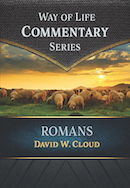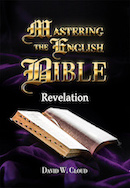866-295-4143, fbns@wayoflife.org
_________
The ancient empire of Sargon illustrates the character of the civilizations that spread across the world after the confusion of tongues at Babel (Genesis 10-11). Archaeology confirms the Bible’s teaching that the very city states that are mentioned in Genesis--Babel, Erech (Uruk), Accad (Akkad), Nineveh, etc.--formed the foundation for all of the succeeding kingdoms. They were technologically brilliant, literate, greedy, oppressive, immoral, and idolatrous, just as we would expect from the Bible’s teaching.
Sargon, ruler of Akkad, appears in the Sumerian King List as one of the most famous ancient Mesopotamian rulers. Archaeologists think that he died in about 2279 BC, which is the general time period as Nimrod, according to the biblical date. (By Ussher’s reckoning, Nimrod was born in 2289 BC.)
In the centuries after Sargon, his inscriptions were copied by school children, and his acts of bravery, his military achievements, and his eloquence were memorialized in poems.
He was a great conqueror and builder, after the fashion of the biblical Nimrod. He ruled a kingdom that covered the Mesopotamian region and spread northwest to Armenia and northeast to Elam.
“Sargon harnessed the hitherto untapped forces of his native land and set forth to conquer the world. ... Sargon created his empire through the prowess of a great standing army. In one of his inscriptions, Sargon claims he fed daily 5,400 able-bodied men in his service. Speed and mobility were certainly factors in Sargon’s military success, his main force consisting of bowmen and lancers, lightly armed. ... As city after city fell before him, Sargon, ‘victorious in thirty-four battles,’ pushed far into Iran, his army defeating even major coalitions raised against it. To the west, he surged up the Euphrates past Mari. To the north, he invaded [Ebla as far as the Cedar Forest] and the Silver Mountains’” (Foster and Foster, Civilizations of Ancient Iraq, p. 52).
Sargon installed his own people in governorships throughout his empire and made his native tongue, Akkadian, the language of international trade.
Sargon built a new capital in Agade (on the Euphrates River near Kish, north of Ur) and filled it with wealth from throughout the region, “silos” brimming with gold, silver, copper, tin, lapis.
Sargon claimed to have crossed the Mediterranean, and in the 1870s a seal was found on Cyprus with the name “Apil-Ishtar, son of Ilu-bani, servant of the Divine Naram-Sin” (Sargon’s grandson).
Sargon built a network of roads to connect major cities and had a postal system.
He said that ships docked at Agade from Dilmun, Magan, and Meluhha (Paolo Matthiae, Ebla an Empire Rediscovered, 1981, p. 59).
Dilmun is modern Bahrain on the Persian Gulf.
Magan was probably located in Oman or Yemen. It is mentioned in cuneiform texts of around 2300 BC as a source of copper and diorite (used for making statues) for Mesopotamia. German Mining Museum excavations have located significant copper deposits and bun-shaped copper ingots dating to 2500-2000 BC (“Digging in the Land of Magan,” Archaeology, published by the Archaeological Institute of America, May/June 1997).
Meluhha was probably located in the Indus Valley on the western border of India. Boats carrying ore, timber, and other goods would have traveled down the Indus River to the Arabian Sea, from there up the Persian Gulf, and then up the Euphrates to Agade, a trip of more than 2,000 miles.
Sargon’s empire had “universal measures of length, area, dry and liquid capacity, and weight,” which “would remain standard for over a thousand years” (Paul Kriwaczek, Babylon: Mesopotamia and the Birth of Civilization).
Sargon’s people worked with copper, bronze, lead, and tin. They produced beautiful pottery and jewelry. They even practiced advanced dentistry, including drilled molar crowns (Kriwaczek). They had extensive canal systems to irrigate fields of wheat and barley. They built large dockyards, granaries, and warehouses, and dredged canals for shipping purposes. The cities were protected by massive walls.
They wrote official documents in two languages, Sumerian and Akkadian.
“Cuneiform script had for some time been extending its range to record Semitic as well as Sumerian speech. To the untutored eye the cuneiform looks much the same. But the new official status of written Akkadian brings into focus an additional layer of complexity added to an already difficult system. The Sumerian meanings of the signs were not replaced but ran in parallel with their Akkadian equivalents. So each could be read as a Sumerian word or words, or alternatively their phonetic values; it could equally well be read as the equivalent Akkadian word or words, or alternatively their phonetic values. ... To ensure uniformity, a standardized style of writing the signs, an economical and elegant ‘old Akkadian hand’, was taught in scribal schools across the region, from the highlands of Iran to the headwaters of the Tigris and Euphrates in Anatolia to the shores of the Mediterranean. And through the spread of this formalized script the Akkadian language became the lingua franca of the entire Near East, remaining so until the rise of Aramaic a thousand or more years later” (Kriwaczek, Babylon: Mesopotamia and the Birth of Civilization, Kindle Locations 2239-2252).
Sargon was a proud man after the fashion of the biblical Nimrod, calling himself “king of battle.”
Sargon’s empire was idolatrous to the core. He appointed his daughter Enheduanna as high priestess of the moon god Nanna-Sin at Ur, and she wrote many hymns to the various gods and goddesses. He also worshiped Dagon (Matthiae, Ebla an Empire Rediscovered, p. 59).
- Receive these reports by email
- www.wayoflife.org
______________________
Sharing Policy: Much of our material is available for free, such as the hundreds of articles at the Way of Life web site. Other items we sell to help fund our expensive literature and foreign church planting ministries. Way of Life's content falls into two categories: sharable and non-sharable. Things that we encourage you to share include the audio sermons, O Timothy magazine, FBIS articles, and the free eVideos and free eBooks. You are welcome to make copies of these at your own expense and share them with friends and family. You may also post parts of reports and/or entire reports to websites, blogs, etc as long as you give proper credit (citation). A link to the original report is very much appreciated as the reports are frequently updated and/or expanded. Things we do not want copied and distributed are "Store" items like the Fundamental Baptist Digital Library, print editions of our books, electronic editions of the books that we sell, the videos that we sell, etc. The items have taken years to produce at enormous expense in time and money, and we use the income from sales to help fund the ministry. We trust that your Christian honesty will preserve the integrity of this policy. "For the scripture saith, Thou shalt not muzzle the ox that treadeth out the corn. And, The labourer is worthy of his reward" (1 Timothy 5:18). Questions? support@wayoflife.org
Goal:Distributed by Way of Life Literature Inc., the Fundamental Baptist Information Service is an e-mail posting for Bible-believing Christians. Established in 1974, Way of Life Literature is a fundamental Baptist preaching and publishing ministry based in Bethel Baptist Church, London, Ontario, of which Wilbert Unger is the founding Pastor. Brother Cloud lives in South Asia where he has been a church planting missionary since 1979. Our primary goal with the FBIS is to provide material to assist preachers in the edification and protection of the churches.
Offering: Offerings are welcome if you care to make one. If you have been helped and/or blessed by our material offerings can be mailed or made online with with Visa, Mastercard, Discover, or Paypal. For information see: www.wayoflife.org/about/makeanoffering.html.





